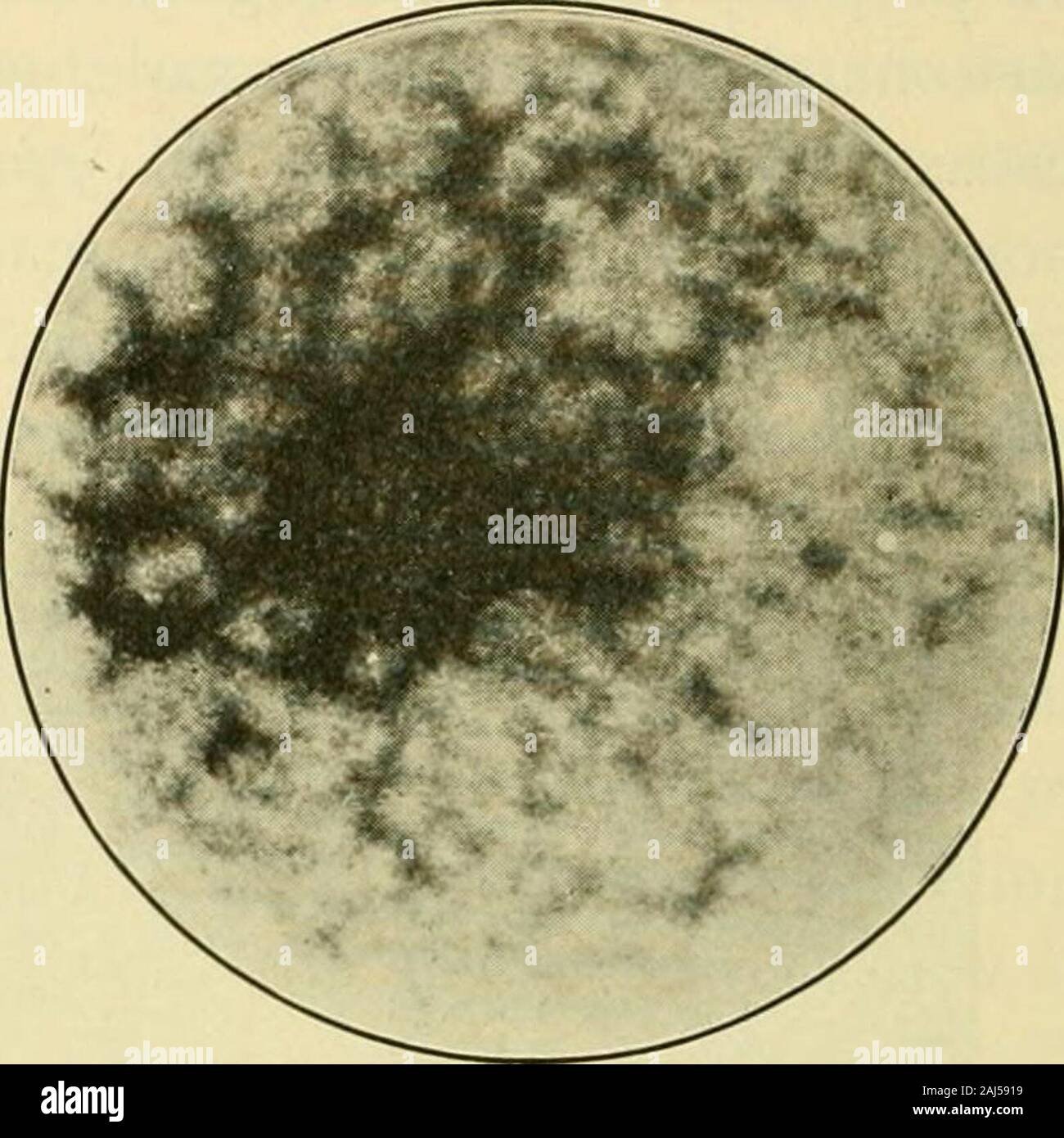Fungous diseases of plants . ithin the tissues. It penetrates the bark readily but may not ^%^ >; S-- to ^ ^^ -^ ^^^k. ^^^^bVa^^^H^^ rv* ^rA *^ ^ ^^^Hk^-3 ^ > 1 *--^^ ii^ ^^PEt^ f r / - n - -- Fig. 171. Sph.-eropsis Malorum: Mature Pycnidium. (Photographof a drawing by F. C. Stewart) extend far into the wood. The pycnidia are erumpent, usually sur-rounded by a broken epidermis (Fig. i/i) ^^^ they appear incross section somewhat depressed-conical at the apex. The sporesare oblong-elliptical, brown, and usually about twice as long asbroad, measuring in general 22-32 x 10-14/a. It has bee

Image details
Contributor:
The Reading Room / Alamy Stock PhotoImage ID:
2AJ5919File size:
7.2 MB (297.9 KB Compressed download)Releases:
Model - no | Property - noDo I need a release?Dimensions:
1581 x 1581 px | 26.8 x 26.8 cm | 10.5 x 10.5 inches | 150dpiMore information:
This image is a public domain image, which means either that copyright has expired in the image or the copyright holder has waived their copyright. Alamy charges you a fee for access to the high resolution copy of the image.
This image could have imperfections as it’s either historical or reportage.
Fungous diseases of plants . ithin the tissues. It penetrates the bark readily but may not ^%^ >; S-- to ^ ^^ -^ ^^^k. ^^^^bVa^^^H^^ rv* ^rA *^ ^ ^^^Hk^-3 ^ > 1 *--^^ ii^ ^^PEt^ f r / ~- n - -- Fig. 171. Sph.-eropsis Malorum: Mature Pycnidium. (Photographof a drawing by F. C. Stewart) extend far into the wood. The pycnidia are erumpent, usually sur-rounded by a broken epidermis (Fig. i/i) ^^^ they appear incross section somewhat depressed-conical at the apex. The sporesare oblong-elliptical, brown, and usually about twice as long asbroad, measuring in general 22-32 x 10-14/a. It has been foundthat the average sizes of the spores of the forms on apple, pear, and quince vary according to the host and part attacked. The mostnoteworthy difference is that upon the limbs the spores are smallerthan on the fruits. The spores seem to retain their vitality for aconsiderable period of time, having been germinated after beingstored for a year in the laboratory. On agar the fungus develops ;54 FUNGOUS DISEASES OF PLANTS. Fig. 172. Isolation Culture ofSph^r ops/s A/a l or um ;ivc a winter spraying with white- effuse colonies, the aerial portions of which are at first gray, be-com.ing darker with age. The pycnidia may sometimes be pro-duced in agar and also uponvarious solid media in tubecultures. Control. Preventive meas-ures have not been carefullyworked out. Under ordinarycircumstances orchards ingood condition will suffer least.Advantage may also be de-rived from treating the limbsand trunk thoroughly with any cleaning up washes, or withBordeaux mixture. P^or varie-ties susceptible to sunscald, after which the canker may becommon, it is recommended towash. Pruning and scraping may also be required, and along withthis the wholesale destruction of affected limbs or fruit. XLVII. RASPBERRY CANE BLIGHT Coiiiof/iyrii/in FiickcUi Sacc. Stewart, F. C. Raspberry Cane Blight and Raspberry Yellows. N. Y. (Geneva)Agl. Exp. Sta. Built. 226: 331-366. pis. 1-6. 1902. Habitat relations.